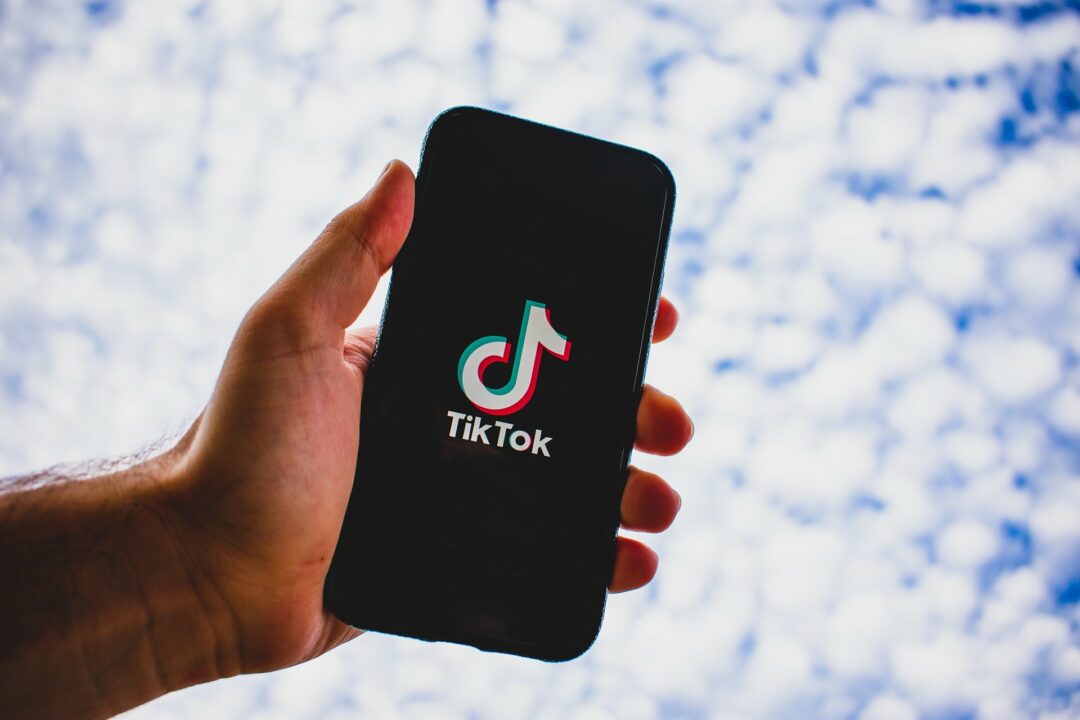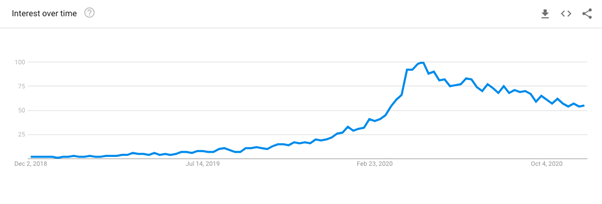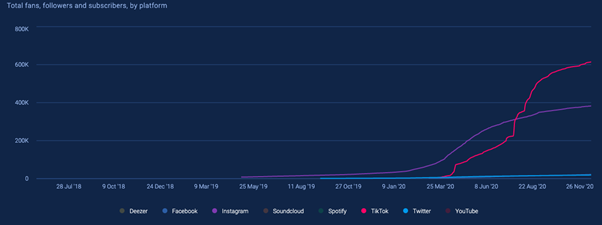2020 was a challenging year across almost every industry, and few took a bigger hit than the entertainment sector.
With venues around the world shutting their doors and cancelled gigs piling up, many young artists had to postpone their debut.
At the very least, they had to find an alternative way to get their music out and build a fanbase without relying on live performances.
Fortunately for these artists, TikTok came to their rescue, allowing them to grow their career from the comfort and safety of their own home.
So, what’s the deal with TikTok?
TikTok is a popular video-based social platform developed by Chinese tech giant ByteDance in 2018.
The platform started life as two different apps: Musical.ly, which launched in Shanghai in 2014, and Douyin, which was founded by ByteDance in 2016. ByteDance wanted to expand Douyin internationally, and did so under a new name in September 2017: TikTok. They then acquired Musical.ly and folded it into TikTok shortly afterwards in August 2018.
In a nutshell, TikTok allows its users to share videos of up to 60 seconds. These rapid-fire short videos of lip-syncs to popular music and viral challenges delivered via a never-ending feed make for an addictive viewing experience. According to data released by ByteDance, their U.S users open the app eight times a day, with an individual session lasting for about 4.9 minutes, which is reportedly the highest individual session time across all social media platforms.
Since TikTok’s launch in 2018, the app has racked up billions (yes, with a ‘b’) of downloads globally. The highest peak was observed during Q1 2020, which saw global audiences quarantined at home amid COVID-19. Already claiming the coveted status of “most downloaded app” for both 2018 and 2019, in April 2020, TikTok officially reached a staggering 2 billion downloads.
How musicians are using TikTok to grow (and resurrect) their careers
Although TikTok took Gen Z by storm almost instantly, older users needed a little more time to get hooked. But as soon as they did get involved, their demographic has started indulging and creating TikTok content in a big way.
Despite its rapid growth in popularity, TikTok remains a relatively new medium. As the app continues to attract new users, it creates a unique opportunity for young talent to embrace its potential.
To reach mass-awareness on TikTok, users across the world are tapping into trending memes and challenges featuring a mix of chart-topping songs, niche artists and even long-lost hits from decades past.
Matthew Wilder, the artist behind 1984 single ‘Break My Stride’, is enjoying a huge surge in popularity by going viral on TikTok, helping him to climb the charts again almost four decades later:
At time of writing, TikTok users have featured Wilder’s song on their videos over 526K times as a part of the ongoing trend.
What kind of trend could lead to such impressive streaming performance? It involves texting someone the lyrics to ‘Break My Stride’, one line at a time until they figure out what you’re doing; then you film yourself dancing in front of the text chain – and the results are astonishing. The track has recently popped up on Spotify’s Viral 50 and Apple Music’s Top 100 charts around the world, giving it a whole new lease of life.
And what about new artists?
The most famous example of a “TikTok-made” musician is Montero “Lil Nas X” Hill.
Instead of competing with other up-and-coming rappers on more popular streaming services such as SoundCloud or Spotify, this 21-years-old American rapper decided to leverage the potential of a new social media platform. His efforts to promote “Old Town Road” using TikTok proved successful, and the song eventually got picked up as a trending meme, securing millions of streams as a result.
In his interview with Time, Hill commented: “I should maybe be paying TikTok. They really boosted the song. It was getting to the point that it was almost stagnant. When TikTok hit it, almost every day since that, the streams have been up. I credit them a lot.”
TikTok creates opportunities – but can it sustain an artist’s career?
Despite many mainstream bands already taking advantage of the new social video platform, TikTok isn’t reserved only for well-established artists. On the contrary, the platform is known for causing the breakthrough success of many emerging musicians such as Powfu, SAINt JHN, BENEE or Salem Ilese.
Several previously unknown musicians made their name thanks to being a part of the popular trends, memes and challenges thatTikTok thrives on. However, with music always being at the core of TikTok’s value proposition, the discovery of niche artists quickly becomes a massive part of the app’s identity.
Search trends clearly show what we think of as “TikTok songs” are growing in popularity across the world. The app has been incredibly successful so far in generating online streams to springboard lesser-known artists into the charts, as well as driving their explosive social media following.
A UK-based video production studio, Nibble Video, has recently released TikTok earnings data that investigates how much money TikTok artists could make in online royalties as a result of going viral on the platform.
According to Nibble’s report, a Canadian artist, Isaiah Faber – also known as Powfu – could be making as much as £2.3M in royalties from Spotify and YouTube with his single ‘Death Bed’ alone.
“Death Bed (Coffee for Your Head)” samples the 2017 song “Coffee” by UK. indie-pop artist Beabadoobee and tells the story of a man confessing his love while on his deathbed. Since the tune was uploaded to Powfu’s YouTube channel back in April, it has already accumulated over 247M views,as well as being featured in over 5.8M videos on TikTok.
But apart from online royalties, Faber has also benefited from an ever-increasing following across his social media channels. According to data collected by Soundcharts, his fan base on popular social media platforms such as Instagram saw a significant uplift as soon as ‘Death Bed’ took off virally.
Source: Soundcharts
Since Powfu is already making a significant profit from online streaming thanks to a single song, it stands to reason that he could benefit greatly from his Instagram presence in the long-term.
With almost 382K followers on Instagram, Powfu could be charging as much as £1.6K for a single post if he’d choose to become a paid influencer. [source: Inkifi]
TikTok’s impact on the music industry
Although there are many examples of artists who have had their music career skyrocket because of TikTok, the social media platform still sparks controversy.
Even with Donald Trump publicly criticising TikTok and demanding a blanket country-wide ban in the US due to privacy concerns, the company behind TikTok is still one of the world’s most profitable start-ups, its value circulating around $50B.
But as the profit of the start-up grows, one question is still being asked – do musicians make enough off their TikTok success?
The Digital, Culture, Media and Sport Committee has recently launched an inquiry into the economics of music streaming, urging the UK government to look into the business models operated by popular streaming platforms such as Spotify and Apple Music. The inquiry aims to evaluate streaming platforms’ economic impact on the music industry for artists, record labels and record shops.
A recent poll by YouGov (on behalf of the #BrokenRecord campaign) found that 77% thought artists are not being paid enough, while 76% felt songwriters were also underpaid. In contrast, the research showed that Universal Music Group recorded whopping revenues of $1.14bn in the last quarter despite the global pandemic and economic downturn.
During the first inquiry hearing last week, equitable remuneration, increased transparency and user-centric streaming models were put forward as ways in which the industry could be reformed and made fairer for artists. At the hearing, Guy Garvey, lead singer of the rock band Elbow, declared that the “system, as it is, is threatening the future of music”.
And what do TikTok’s earnings look like? While the platform doesn’t advertise their business practices, it’s a known fact that it has struck deals with rights holders and pays royalties in return for being able to use their music. It’s the same kind of arrangement that apps, websites, YouTube, streamers, podcasts, radio stations, and other broadcasters pay.
Back in July, TikTok sealed a deal with the National Music Publishers’ Association (NMPA). This trade association has previously accused TikTok of failing to pay adequate royalties to music rights-holders and has even reportedly threatened legal action.
The multi-year agreement that has been developed in partnership between TikTok and NMPA was apparently designed to “enrich users’ experience and the creators of the music made available by the platform by helping them to get their music seen on a canvas with unlimited avenues for expression”, as noted by the official press release issued by NMPA.
And while TikTok is reportedly getting better at paying royalties for mainstream artists and their distributors, it leaves new and unsigned artists behind in terms of equal compensation.
Yes, it offers excellent publicity and free promotion in front of a multi-million-strong global audience, which can be quite lucrative, especially if you’re lucky enough to get involved in a major trend. But for those who don’t, TikTok does has an alternative.
Back in August, the company announced its first music distribution partnership with indie music distributor United Masters. According to TechCrunch, the deal will allow artists on TikTok to tap into the platform’s ability to make their music go viral, and then distribute their songs directly to other music streaming services such as Spotify, Apple Music and YouTube.
Does this mark the beginning of a whole new future of music discovery? We firmly believe so.



